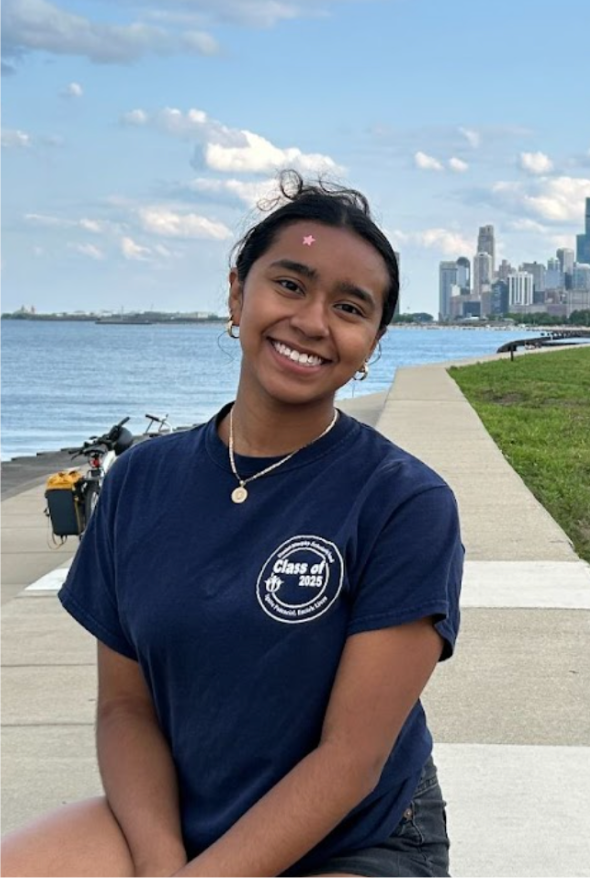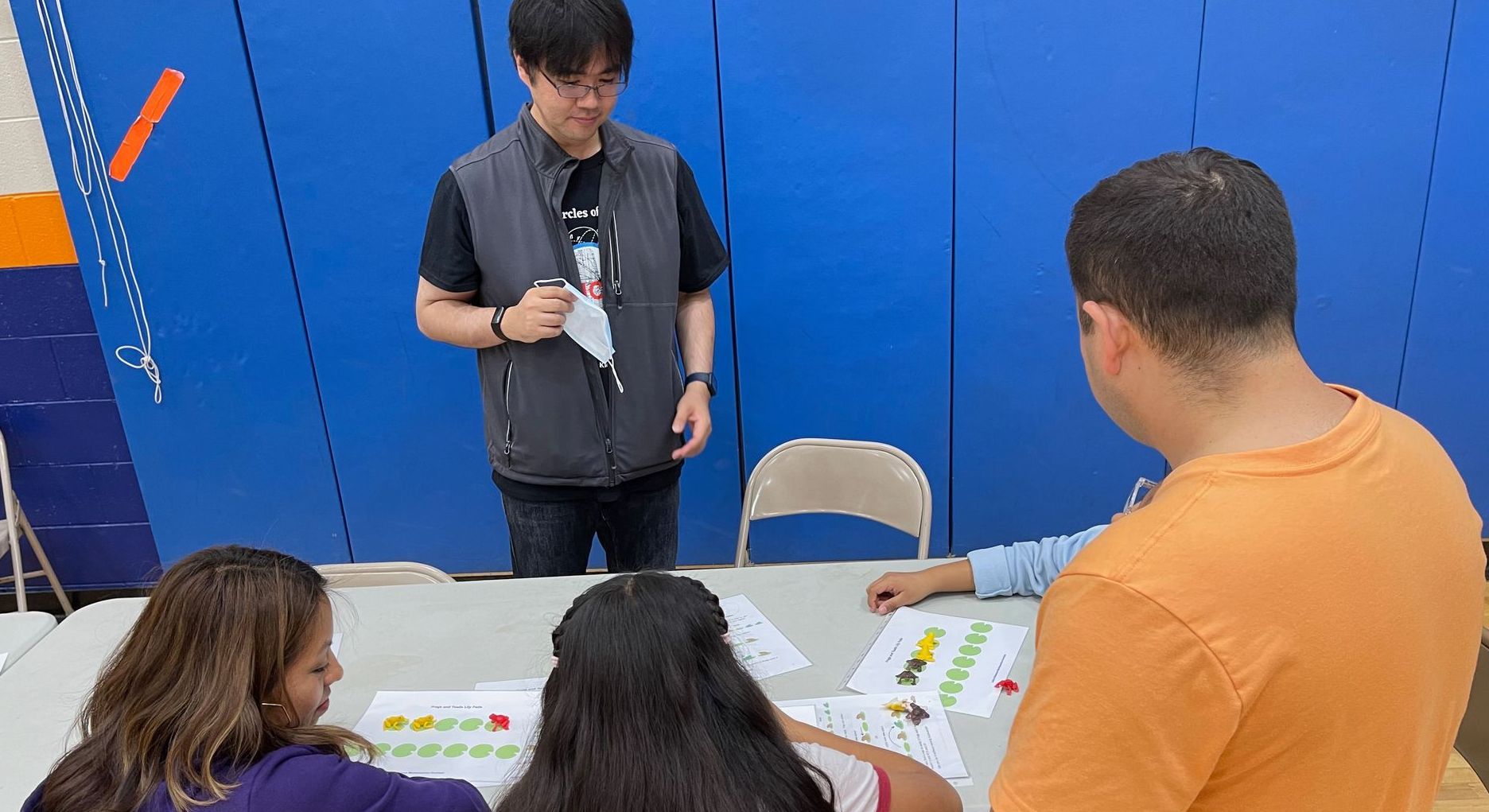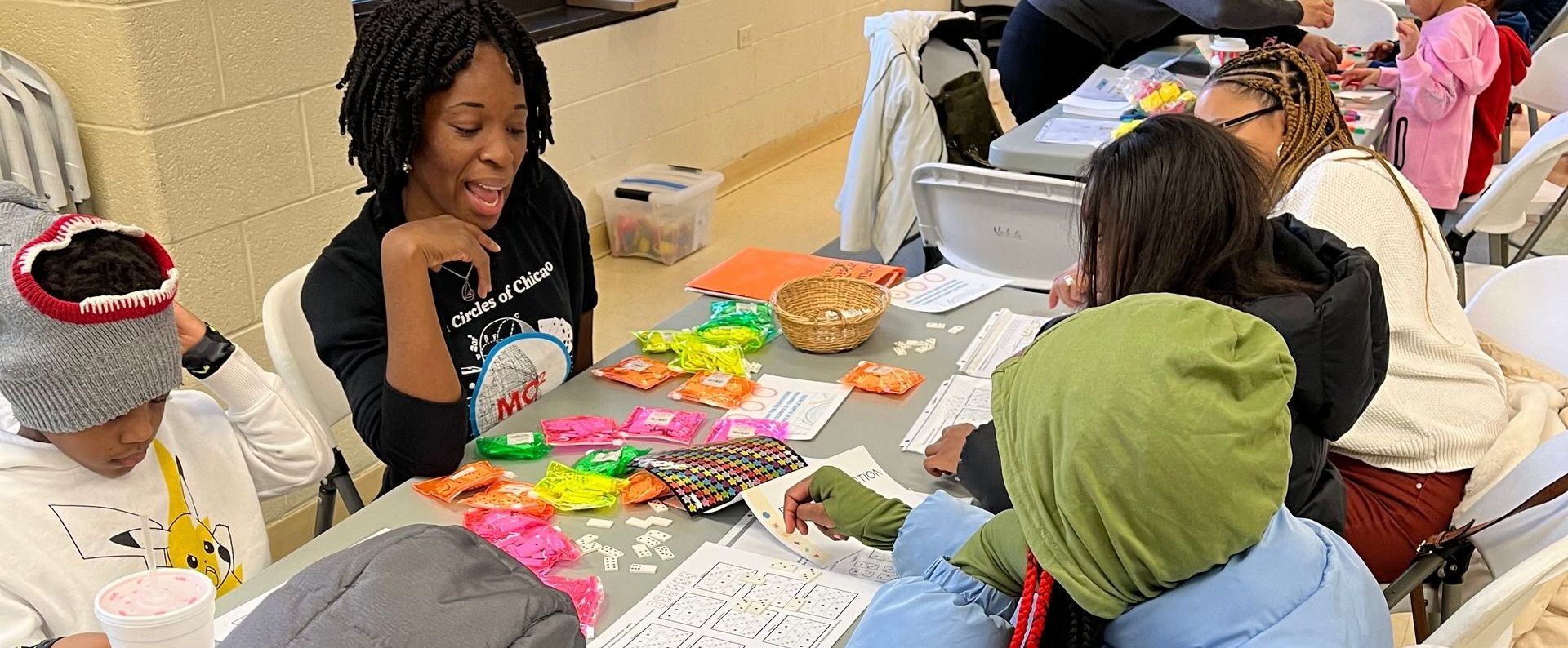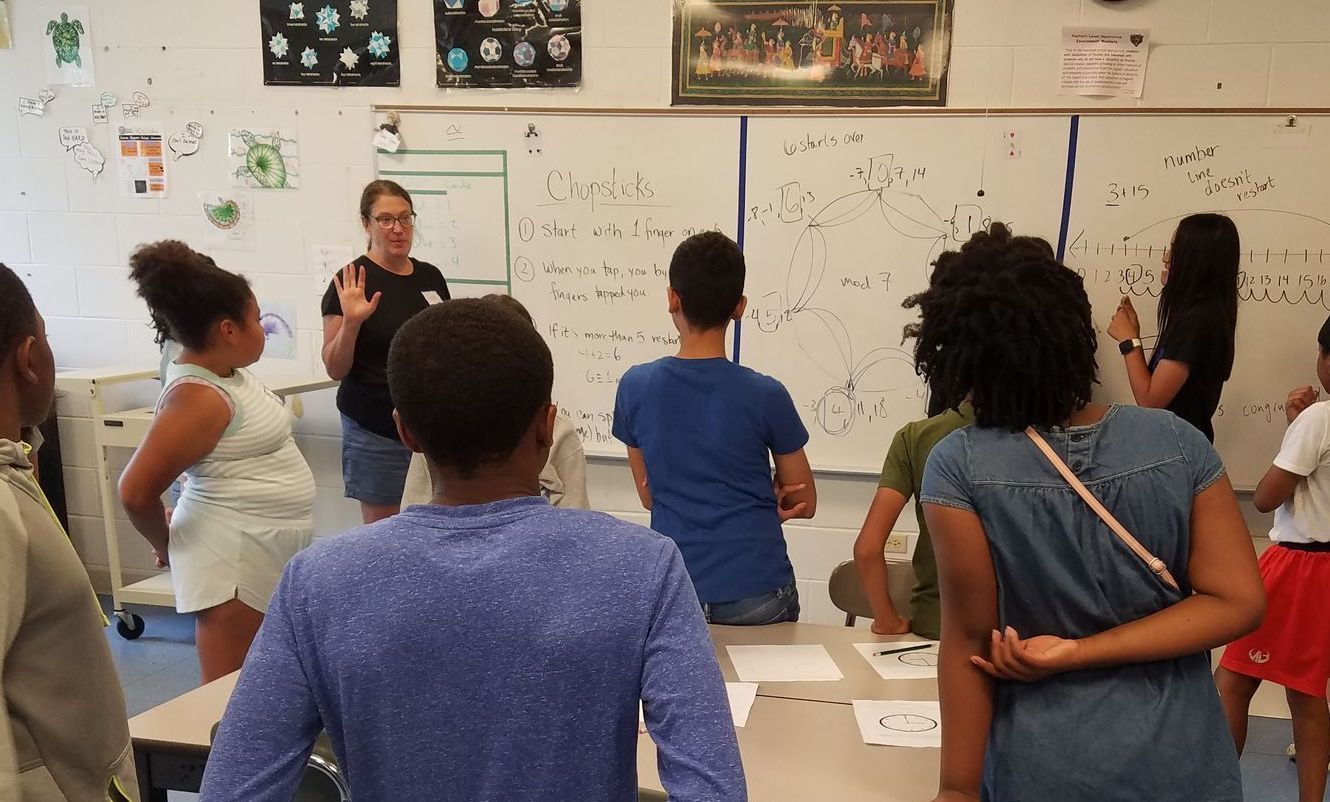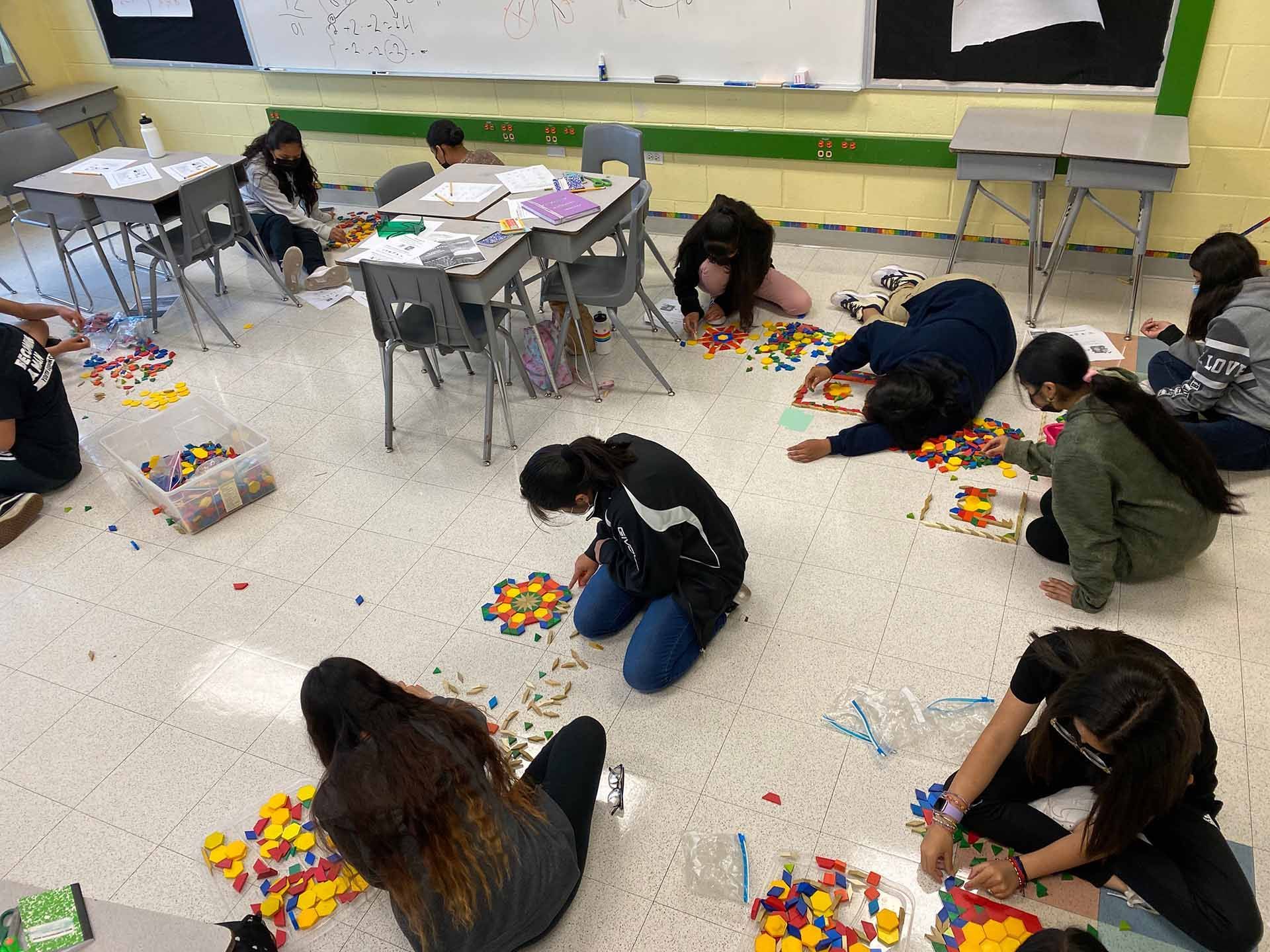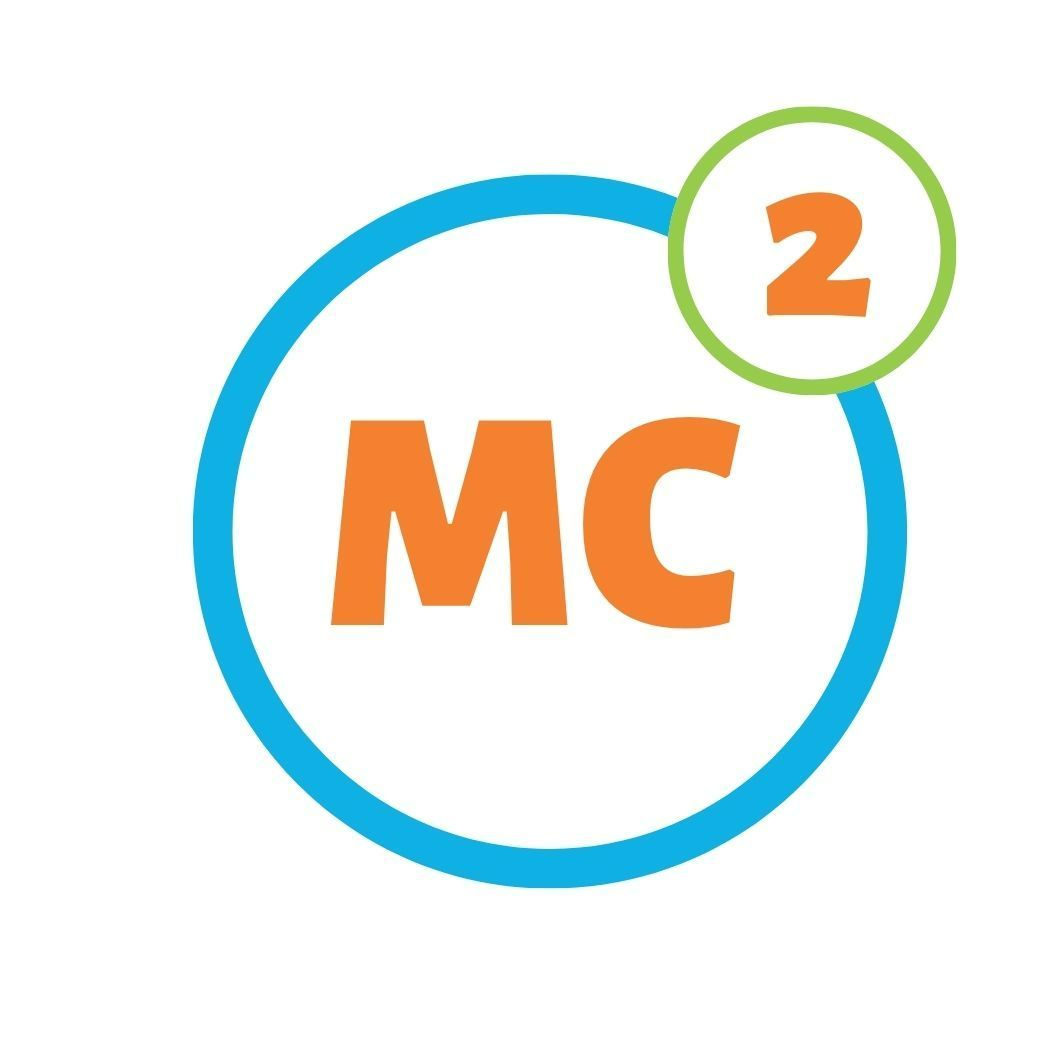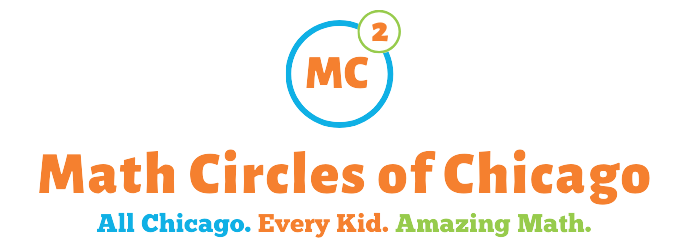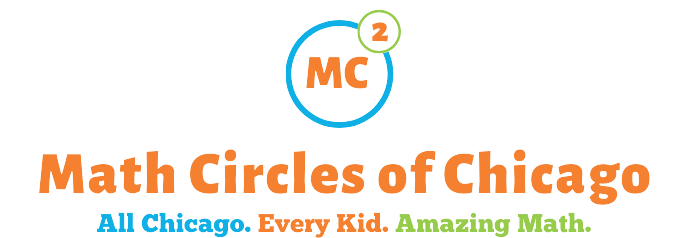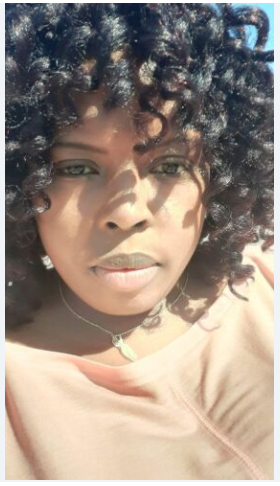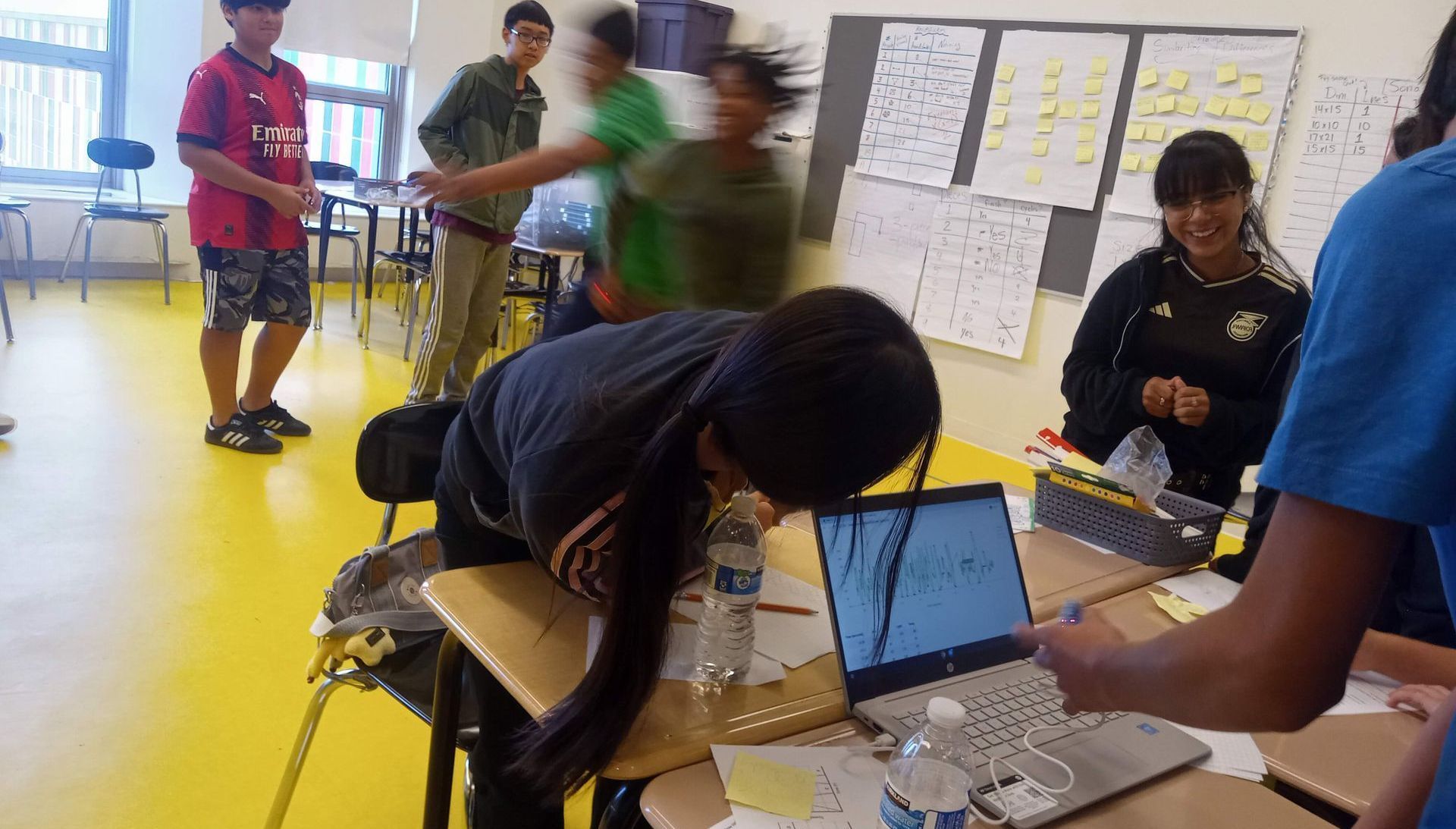A consistent questions parents have posed on our surveys has been, “What math is my kid actually doing in Math Circle?” Here’s a sample problem from each of our program levels:
Archimedes: Can you place the numbers 1 to 6 in this figure so that each side of the triangle has the same sum? Can you do this in more than one way? Are all your methods ‘different’? Can you find all possible methods? Can you do this with other shapes?
Brahmagupta: A room is 30 feet long, 12 feet wide, and 12 feet tall. There is a spider in the center of one of the smaller walls, 1 foot from the ceiling. There is a fly in the middle of the opposite wall, 1 foot from the floor. What is the shortest possible route along which the spider may crawl to reach her prey? 
Cantor: Platonic solids are polyhedra with one kind of regular polygon as a face, and with the same number of faces meeting at each vertex (a cube is a good example; the icosahedron at right is another). What are the possible platonic solids? Build them!
DesCartes: A king is placed on space a1 on a chess board. Player 1 and player 2 take turns moving the king one space up, right, or diagonally. Whoever moves the king to h8 wins. If each player plays strategically, who should win? Why?
Euler: At a congress of mathematicians, whenever two people meet, they shake hands. A person is even if he has shaken hands an even number of times, and odd if he has shaken an odd number of times. Prove that at all times there are an even number of odd mathematicians.
Of course, the problems we choose are just the tip of the iceberg. For the fly and the spider problem, Steve Starr brought in wooden blocks to help kids visualize. Matt Moran and the Cantor team had their students play with zometools throughout the winter.
Moreover, we aim to establish communities of interest—it’s much more motivating to try these problems with a group of kids who love math, who share multiple methods, and who are learning to struggle and persevere. Posing non-routine extendable problems is one side of the work; collaboration and community is the other, equally important side.
We promise to do a better job telling parents what we are up to, but keep in mind that much of what we do can’t be captured in a simple way, just by sharing the names of topics or problems that we tried. Part of the meaning of ‘Circle’ in our title is community, and that has to be experienced first hand!

